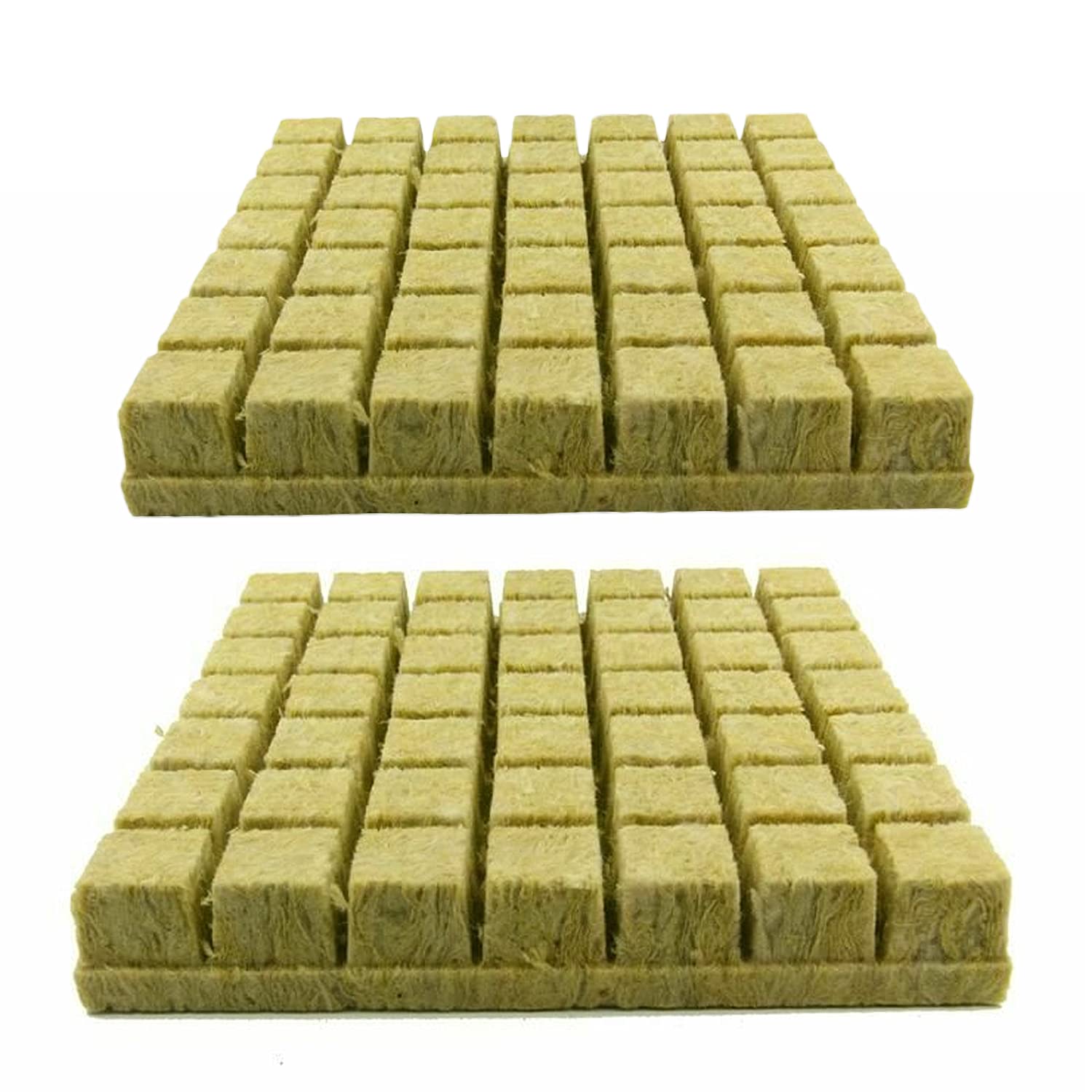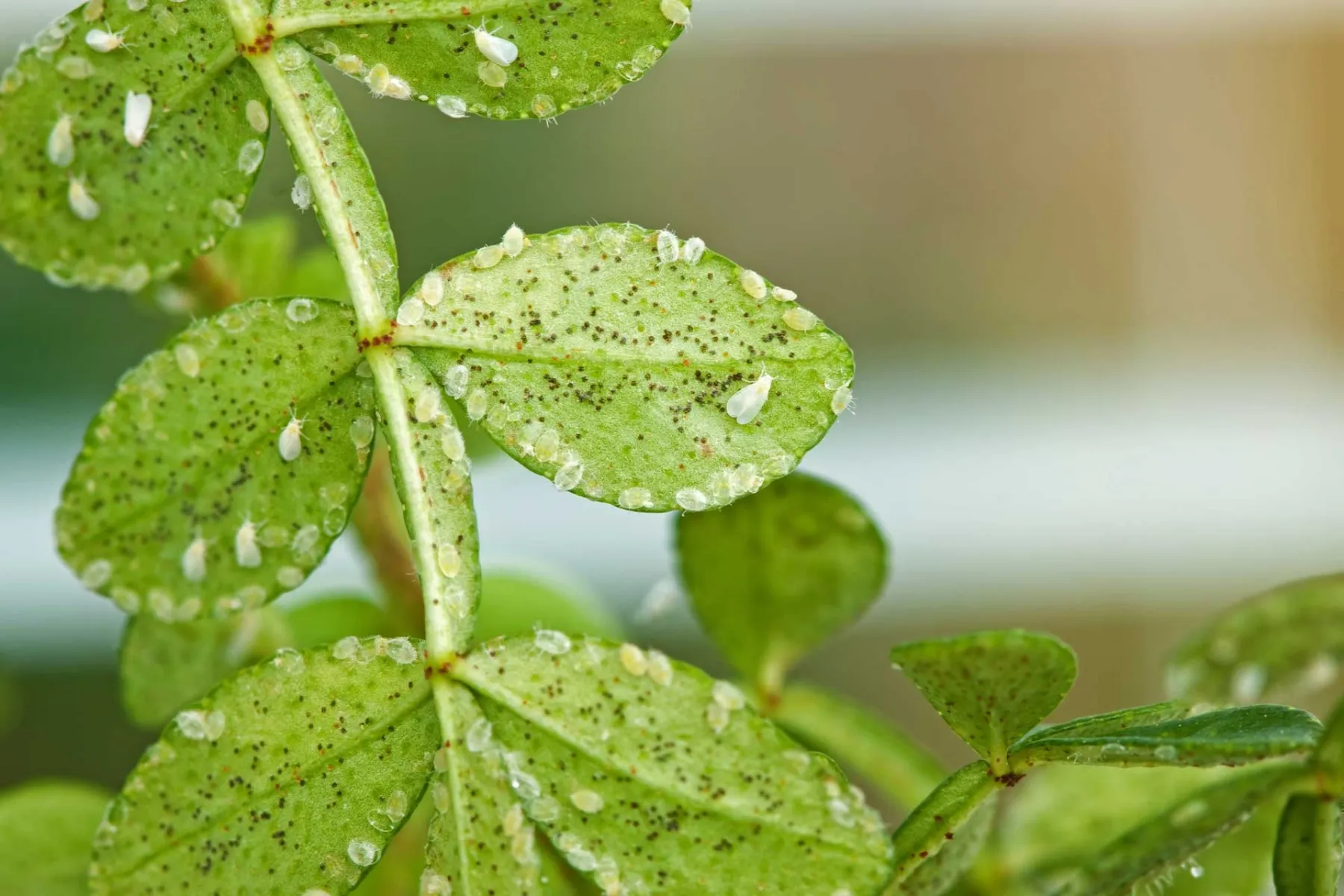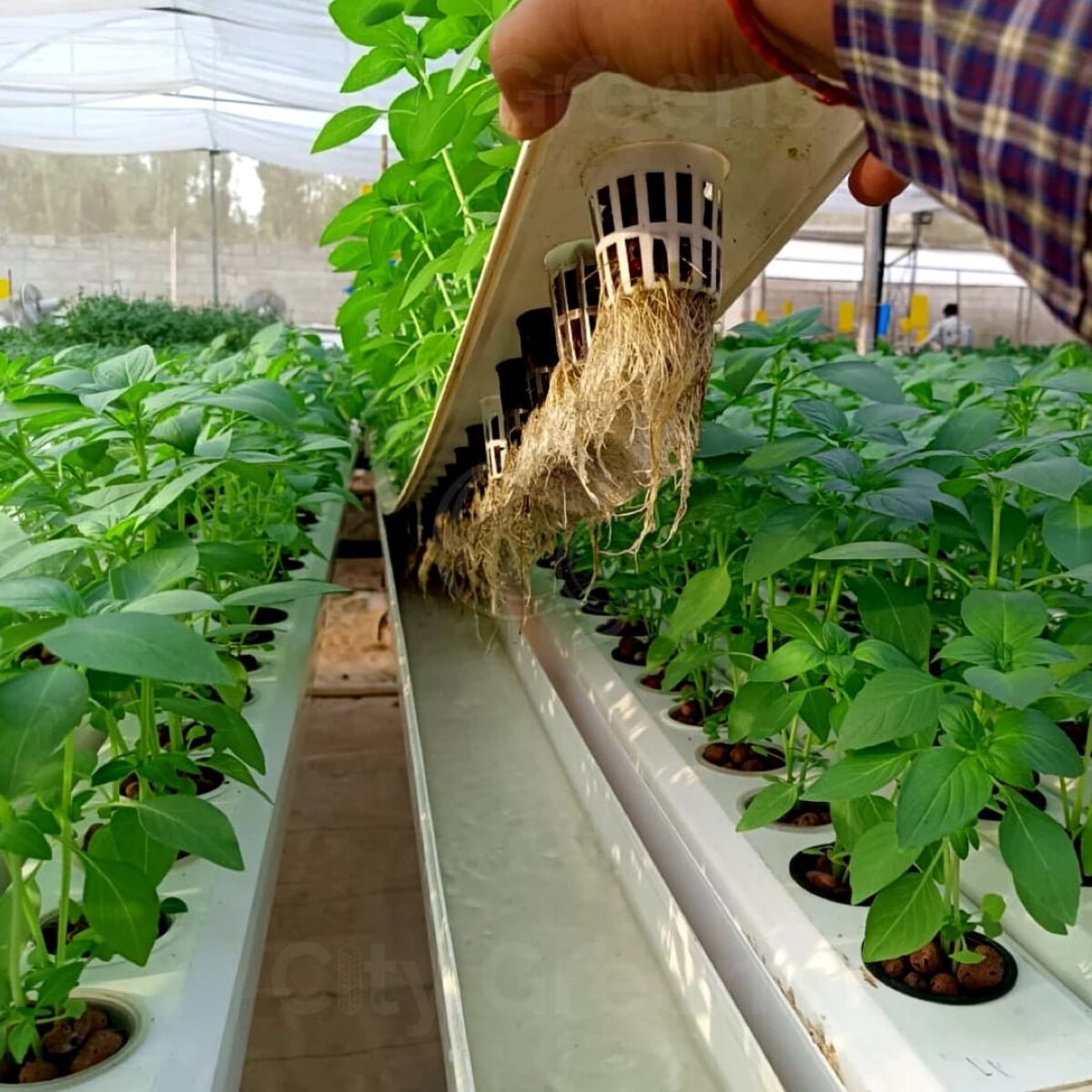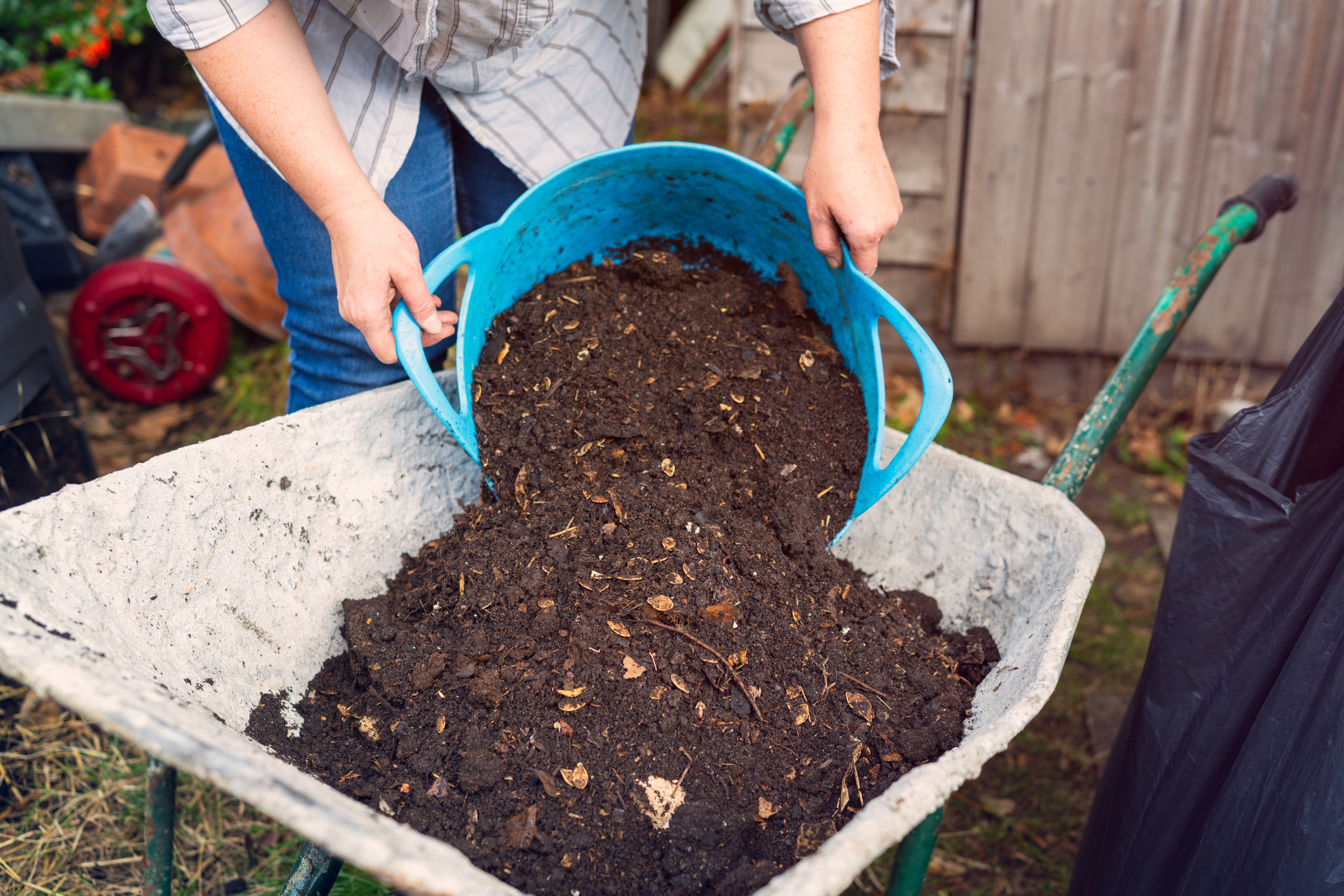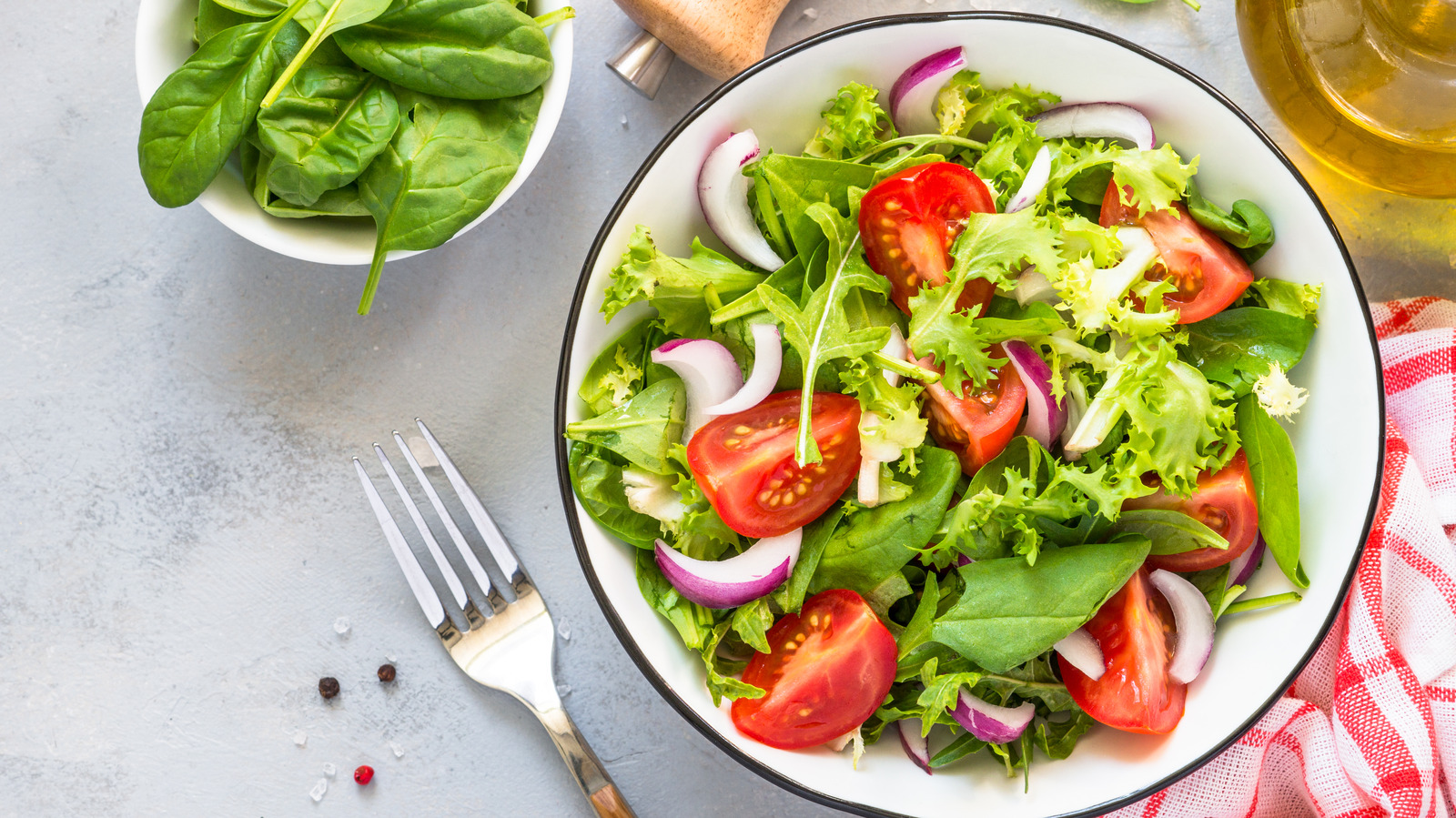Home>Gardening Tips and Tricks>Eco-Friendly Gardening>What Should The PPM Be For Hydroponics


Eco-Friendly Gardening
What Should The PPM Be For Hydroponics
Published: September 22, 2023
Learn how to maintain an eco-friendly hydroponic garden with the right PPM levels. Find out what the ideal PPM should be for successful hydroponic gardening.
(Many of the links in this article redirect to a specific reviewed product. Your purchase of these products through affiliate links helps to generate commission for Chicagolandgardening.com, at no extra cost. Learn more)
Table of Contents
Introduction
Hydroponics, a soilless method of gardening, has gained popularity in recent years due to its efficiency and environmental benefits. It allows plants to grow in nutrient-rich water solutions, providing them with all the essential elements they need to thrive. One crucial aspect of successful hydroponic gardening is maintaining the right ppm (parts per million) levels in the nutrient solution.
PPM refers to the concentration of dissolved minerals in the water, which directly affects the plants’ growth and overall health. It is essential to understand how to measure and regulate ppm levels to ensure optimal nutrient uptake by the plants.
In this article, we will delve into the significance of maintaining ppm levels in hydroponics and explore the factors that can affect these levels. We will also discuss the optimal ppm ranges for different hydroponic plants and offer tips on adjusting ppm levels when necessary. By the end of this article, you will have a comprehensive understanding of ppm in hydroponics and the importance of monitoring and adjusting these levels to achieve thriving, eco-friendly gardens.
Understanding PPM in Hydroponics
PPM, or parts per million, is a unit of measurement used to quantify the concentration of dissolved particles in a solution. In the context of hydroponics, it refers to the concentration of nutrients and minerals present in the water used to feed the plants.
Hydroponic systems rely on nutrient solutions to provide plants with the essential elements needed for growth. These solutions are carefully formulated to include a balanced combination of macro and micronutrients to meet the plants’ specific needs.
PPM allows growers to measure the strength of the nutrient solution accurately and ensure that it provides the right amount of nutrients for optimum plant growth. By monitoring and maintaining appropriate ppm levels, gardeners can prevent nutrient deficiencies or toxicities that can hinder plant development.
PPM meters or TDS (Total Dissolved Solids) meters are used to measure ppm levels in hydroponics. These devices work by measuring the electrical conductivity of the nutrient solution, which is directly related to the concentration of dissolved particles.
When using a PPM meter, it is essential to calibrate it regularly to ensure accurate readings. Calibration involves using a calibration solution with a known ppm value to adjust the meter’s accuracy.
Understanding the ppm levels in hydroponics is crucial for monitoring the nutrient uptake of plants and ensuring they receive optimal nutrition. By maintaining appropriate ppm levels, gardeners can provide the necessary nutrients and maximize the growth potential of their hydroponic gardens.
Importance of Maintaining PPM Levels
Maintaining the appropriate ppm levels in hydroponics is of utmost importance for the overall health and productivity of plants. It directly affects the nutrient uptake and absorption, leading to vigorous growth, abundant yields, and disease resistance.
One of the primary benefits of hydroponic gardening is the ability to precisely control and adjust nutrient levels. By monitoring and maintaining optimal ppm levels, gardeners can ensure that plants receive the right amount of essential nutrients without the risk of deficiency or toxicity.
When ppm levels are too low, plants may exhibit nutrient deficiencies. This can manifest as pale or yellowed leaves, stunted growth, and poor overall vigor. Nutrient deficiencies can hinder the plants’ ability to produce energy, impairing photosynthesis and consequently reducing yield potential.
On the other hand, when ppm levels are too high, plants may suffer from nutrient toxicity. Excessive nutrient concentrations can damage the roots, inhibit water uptake, and disrupt the balance between nutrient uptake and transpiration. This can lead to wilting, leaf burn, and even plant death in severe cases.
By maintaining the optimal ppm levels, plants can efficiently absorb nutrients and achieve their full growth potential. This translates into higher yields, improved flavor and texture of harvested produce, and increased resistance to pests and diseases.
Furthermore, maintaining proper ppm levels in hydroponics allows for sustainable and eco-friendly gardening practices. By providing plants with precisely what they need, growers can minimize waste and reduce the reliance on chemical fertilizers. This promotes a more environmentally friendly approach to gardening, with less runoff pollution and overall resource consumption.
Overall, maintaining the appropriate ppm levels plays a crucial role in the success of hydroponic gardening. By ensuring optimal nutrient uptake, gardeners can cultivate healthy, productive plants while promoting sustainable practices for a greener future.
Factors Affecting PPM in Hydroponics
Several factors can affect the ppm levels in hydroponics, and understanding these factors is essential for maintaining optimal nutrient concentrations in the nutrient solution.
1. Water Source: The quality of the water used in hydroponics can significantly impact ppm levels. Water from different sources may contain varying levels of dissolved minerals, such as calcium, magnesium, and sulfur. It is important to test the water source and adjust the nutrient solution accordingly to maintain the desired ppm levels.
2. Nutrient Solution Formulation: The composition and concentration of the nutrient solution used in hydroponics will directly impact the ppm levels. Different hydroponic plants have specific nutrient requirements, and the nutrient solution must be mixed accordingly to match those needs. It is crucial to follow recommended nutrient formulations and adjust them as needed based on plant growth stages.
3. Plant Uptake and Growth Stage: The stage of plant growth and the rate at which plants are absorbing nutrients can affect ppm levels. Younger plants typically have lower nutrient demands compared to mature plants. Continuously monitor ppm levels and adjust nutrient concentrations based on plant growth and nutrient uptake rates.
4. Temperature and pH: Temperature and pH levels can influence nutrient availability and plant uptake, thereby affecting ppm levels. Higher temperatures can increase nutrient uptake and lead to faster depletion of nutrients, requiring more frequent adjustments. Additionally, pH fluctuations can impact nutrient solubility, influencing ppm levels in the solution.
5. Nutrient Solution Maintenance: Regular maintenance of the nutrient solution is crucial for maintaining proper ppm levels. Nutrient solution evaporation, plant uptake, and pH fluctuations can cause changes in ppm. It is important to monitor and adjust the solution accordingly to ensure optimal nutrient concentrations.
By understanding and addressing these factors, hydroponic gardeners can effectively manage and regulate ppm levels, ensuring that plants receive the right balance of nutrients for healthy growth and maximum productivity.
Optimal PPM Ranges for Different Hydroponic Plants
The optimal ppm range for hydroponic plants can vary depending on the specific plant species and growth stage. Different plants have different nutrient requirements, and maintaining the appropriate ppm levels is crucial for their growth and development.
Here are some general guidelines for optimal ppm ranges for common hydroponic plants:
Lettuce and Leafy Greens:
Lettuce and leafy greens, such as spinach and kale, thrive in ppm ranges of 800-1200 during the vegetative stage and 900-1400 during the flowering stage.
Herbs:
Herbs like basil, oregano, and mint prefer ppm ranges of 1000-1500 during the vegetative stage and 1200-1800 during the flowering stage.
Tomatoes and Peppers:
Tomatoes and peppers have higher nutrient requirements compared to leafy greens and herbs. They perform well in ppm ranges of 1400-1800 during the vegetative stage and 1600-2200 during the fruiting stage.
Cucumbers:
Cucumbers thrive in ppm ranges of 1600-2000 during the vegetative stage and 1800-2400 during the fruiting stage.
Strawberries:
For strawberries, ppm ranges between 1200-1600 during the vegetative stage and 1400-1900 during the fruiting stage are recommended.
It is important to note that these ranges serve as general guidelines, and specific plant varieties and nutrient formulations may require slight adjustments. Additionally, the ppm levels may vary depending on the growing conditions and individual plant needs.
Regularly monitor the ppm levels using a reliable ppm meter and adjust the nutrient solution as needed to maintain optimal ppm ranges for your hydroponic plants. This will help ensure that they receive the proper nutrient concentrations for healthy growth, optimal yields, and delicious produce.
Adjusting PPM Levels in Hydroponics
Adjusting ppm levels in hydroponics is a critical aspect of maintaining optimal nutrient concentrations for plant growth. There are several methods that hydroponic gardeners can use to adjust ppm levels and ensure that plants receive the right balance of nutrients:
1. Dilution or Concentration:
If the ppm levels are too high, the nutrient solution can be diluted with fresh water to lower the concentration. Conversely, if the ppm levels are too low, more concentrated nutrient solution can be added to increase the ppm. It is important to make gradual adjustments and regularly test ppm levels to avoid sudden fluctuations that can stress the plants.
2. Increase or Decrease Nutrient Doses:
Another way to adjust ppm levels is by increasing or decreasing the nutrient doses added to the solution. This can be done by following the manufacturer’s instructions and adjusting the ratios of the nutrient solution components. It is important to monitor ppm levels closely after adjusting the nutrient doses to ensure that the desired levels are achieved.
3. pH Adjustment:
pH levels can impact nutrient availability and absorption by the plants. If the pH is too high or too low, it can affect ppm levels. Adjusting the pH to the optimal range (typically between 5.5 and 6.5 for most hydroponic plants) can help maintain proper ppm levels. The pH can be adjusted using pH-up or pH-down solutions according to the manufacturer’s recommendations.
4. Nutrient Solution Refreshment:
Over time, the nutrient solution can become depleted or accumulate certain minerals that can affect ppm levels. Regularly refreshing the nutrient solution can help maintain a balanced ppm level. Gardeners can discard the old solution and prepare a fresh batch, ensuring that the new solution is properly mixed and adjusted to the desired ppm levels.
5. Monitor and Adjust as Needed:
Regular monitoring of ppm levels using a reliable ppm meter is crucial for maintaining optimal nutrient concentrations. Keep a record of the ppm levels and observe any patterns or changes in plant growth. Adjust the ppm levels as needed based on plant performance and the specific requirements of the hydroponic plants being grown.
By actively monitoring and adjusting ppm levels, hydroponic gardeners can provide their plants with the ideal nutrient concentrations required for healthy growth, vigorous yields, and overall plant vitality.
Common Issues with PPM in Hydroponics
While maintaining optimal ppm levels is important for successful hydroponic gardening, there are common issues that gardeners may encounter in relation to ppm levels. Understanding these issues can help address them effectively and ensure healthy plant growth.
1. Nutrient Deficiencies:
If ppm levels are too low, plants may experience nutrient deficiencies. This can manifest as yellowing or stunted growth. Common nutrient deficiencies include nitrogen, phosphorus, and potassium. Regularly monitor ppm levels and adjust nutrient concentrations to prevent nutrient deficiencies and promote healthy plant growth.
2. Nutrient Toxicity:
If ppm levels are too high, plants can suffer from nutrient toxicity. Excessive nutrient concentrations can cause leaf burn, wilting, and hinder overall growth. Make sure to regularly monitor and adjust ppm levels to avoid nutrient toxicity and provide plants with a balanced nutrient supply.
3. pH Imbalances:
pH imbalances can affect nutrient availability and absorption, leading to improper ppm levels. If the pH is too high or too low, it can impact the nutrient uptake by the plants. Regularly monitor and adjust the pH levels to maintain optimal ppm levels and ensure proper nutrient uptake by the plants.
4. Inaccurate PPM Measurements:
Using an inaccurate or poorly calibrated ppm meter can lead to incorrect measurements and misinterpretation of ppm levels. Make sure to calibrate your ppm meter regularly and use a reliable and accurate device for monitoring ppm levels in the nutrient solution.
5. Fluctuations in Water Source:
Changes in the quality of the water source, such as variations in mineral content, can affect ppm levels. Regularly test the water source and adjust the nutrient solution accordingly to maintain consistent ppm levels for optimal plant growth.
6. Inconsistent Nutrient Solution Maintenance:
Inconsistent nutrient solution maintenance, such as neglecting to refresh or adjust the solution regularly, can lead to fluctuations in ppm levels. Develop a consistent nutrient solution maintenance routine, including regular refreshing, adjusting, and monitoring of ppm levels to ensure stable nutrient concentrations for the plants.
By addressing these common issues and maintaining optimal ppm levels, hydroponic gardeners can provide their plants with the appropriate nutrient concentrations, promote healthy growth, and prevent nutrient-related problems.
Conclusion
Maintaining optimal ppm levels in hydroponics is vital for the success of a garden. By understanding and monitoring ppm levels, gardeners can ensure that plants receive the appropriate nutrient concentrations for healthy growth, abundant yields, and environmental sustainability. In hydroponics, ppm refers to the concentration of dissolved particles in the nutrient solution and is measured using ppm meters or TDS meters.
We discussed the importance of maintaining ppm levels in hydroponics, as it directly impacts nutrient uptake, plant growth, and overall plant health. Too low ppm levels can lead to nutrient deficiencies, while too high levels can cause nutrient toxicity. It is crucial to adjust ppm levels through dilution, concentration, and pH adjustments to match the specific nutrient requirements of different plants.
Factors such as water source, nutrient solution formulation, plant uptake, temperature, and pH can affect ppm levels. Monitoring and adjusting ppm levels based on these factors play a critical role in enabling plants to achieve their full growth potential.
We also explored the optimal ppm ranges for different hydroponic plants, emphasizing that specific plants have varying nutrient requirements. Understanding these ranges and making necessary adjustments ensures that plants receive the right balance of nutrients at each stage of growth.
Additionally, common issues related to ppm levels, such as nutrient deficiencies, nutrient toxicity, pH imbalances, and inaccurate measurements, were discussed. By being aware of these issues, gardeners can proactively address them and maintain stable ppm levels for optimal plant health and productivity.
In conclusion, maintaining proper ppm levels is essential for successful eco-friendly gardening in hydroponics. By monitoring and adjusting ppm levels, hydroponic gardeners can provide their plants with the right balance of nutrients, leading to healthy growth, bountiful yields, and a sustainable approach to gardening.
